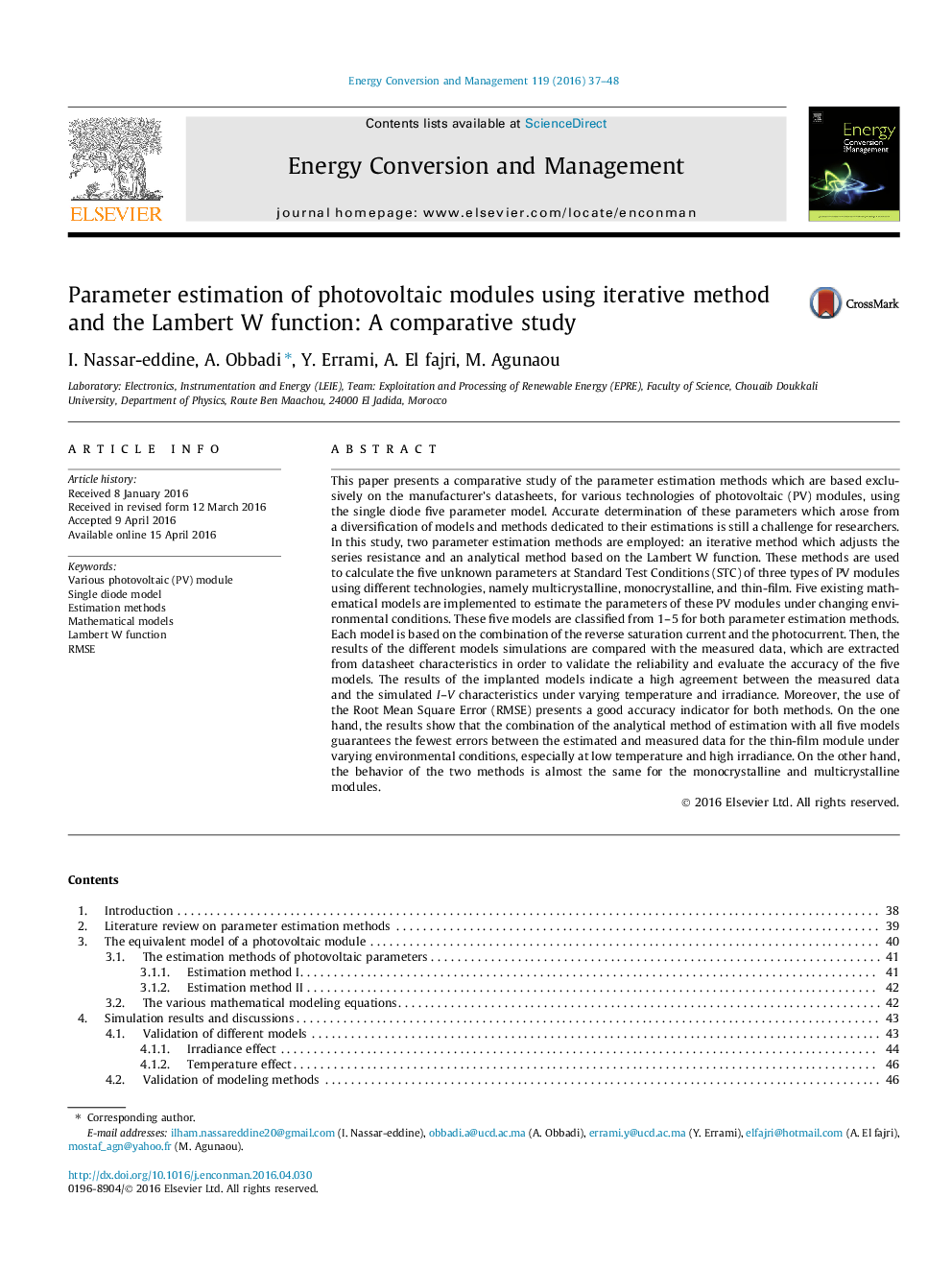| کد مقاله | کد نشریه | سال انتشار | مقاله انگلیسی | نسخه تمام متن |
|---|---|---|---|---|
| 765182 | 1462843 | 2016 | 12 صفحه PDF | دانلود رایگان |

• The parameter estimation methods can be analytical, iterative or evolutionary.
• Comparative study between an iterative method and an analytical method.
• Five models translated the PV parameters under changing environmental conditions.
• Choose which method/model combination is more adequate for each PV module type.
• This work serve as a useful reference for researchers in the PV field.
This paper presents a comparative study of the parameter estimation methods which are based exclusively on the manufacturer’s datasheets, for various technologies of photovoltaic (PV) modules, using the single diode five parameter model. Accurate determination of these parameters which arose from a diversification of models and methods dedicated to their estimations is still a challenge for researchers. In this study, two parameter estimation methods are employed: an iterative method which adjusts the series resistance and an analytical method based on the Lambert W function. These methods are used to calculate the five unknown parameters at Standard Test Conditions (STC) of three types of PV modules using different technologies, namely multicrystalline, monocrystalline, and thin-film. Five existing mathematical models are implemented to estimate the parameters of these PV modules under changing environmental conditions. These five models are classified from 1–5 for both parameter estimation methods. Each model is based on the combination of the reverse saturation current and the photocurrent. Then, the results of the different models simulations are compared with the measured data, which are extracted from datasheet characteristics in order to validate the reliability and evaluate the accuracy of the five models. The results of the implanted models indicate a high agreement between the measured data and the simulated I–V characteristics under varying temperature and irradiance. Moreover, the use of the Root Mean Square Error (RMSE) presents a good accuracy indicator for both methods. On the one hand, the results show that the combination of the analytical method of estimation with all five models guarantees the fewest errors between the estimated and measured data for the thin-film module under varying environmental conditions, especially at low temperature and high irradiance. On the other hand, the behavior of the two methods is almost the same for the monocrystalline and multicrystalline modules.
Journal: Energy Conversion and Management - Volume 119, 1 July 2016, Pages 37–48